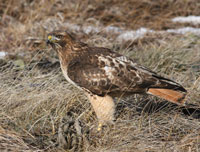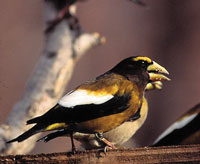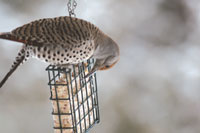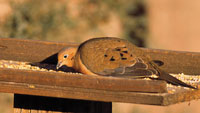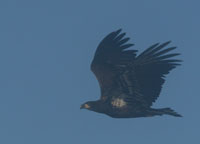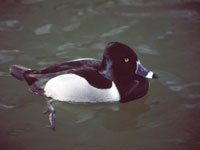An annual rite of passage for birders in winter is to participate in at least one Christmas Bird Count (CBC). Hardcore birdwatchers sign up for several counts staggered over the two-week counting period. Moab’s count will be held on December 19 and all are invited to attend.
Frank Chapman and the fledgling Audubon Society started the Christmas Bird Count 110 years ago. The participants wanted to signal their opposition to the “Side Hunt,” a traditional holiday event that included shooting as many birds as possible, then tallying the kill. Thankfully, times have changed. In North America alone, over 50,000 birders will conduct over 2,000 peaceful counts.
What started as a conservationist’s protest is now the longest running wildlife census in America. The data provides a snapshot of winter bird populations and has led to the Audubon Society’s report “Common Birds in Decline.” This report forms the foundation of Audubon’s Watchlist, a roll call of birds whose populations appear to be at risk either locally or regionally.
Science aside, some people choose to participate in the CBC as “feeder watchers” and monitor their bird feeders and backyards during the day. The watchers record the highest numbers of a given species observed throughout the day, and if the weather is cold and nasty, sometimes this is a nice option.
So if this is your first time birding, here are a few “birdspeak” terms to get you going.
Count Day. Just mention these two words to a birder and they know you are talking about the Christmas Bird Count. Count Day ranks up there with Game 7 of the World Series, the Super Bowl and Tax Day.
Count Week. This is the seven-day period that straddles Count Day. Birds observed during this time get included in the final tally, so keep an eye out for rarities or the usual suspects that get missed on Count Day.
LBJ. No, not Lyndon B. Johnson, but Little Brown Jobber. This refers to those small birds that lurk in the bushes and are hard to identify. Do not, under any circumstances, use this term if you are looking at a bird bigger than a robin.
Count Circle. Not the planning committee that determines who goes where, but the actual boundaries of the count. Remember, during Count Week only birds observed within the Count Circle count, so know the edges of the circle.
Lifer. Serious birders keep a life list that includes all the birds they’ve ever seen. This tends to make them a bit high strung about adding birds to this tally, especially if they have been at it for awhile. If you’re a beginner, try not to say, “That’s a lifer for me” for every new bird you see.
Where’s your documentation? Forget your passport, driver’s license, or photo ID. When a rare or unusual-to-the-area bird is seen, you’ll want to write down as many notes about the bird as you can. Photographs are nice. When turned in, this extra data sheet will receive more scrutiny than the County’s annual budget plan and inspire more discussion than said plan if your bird’s identification is in question.
Duck! When someone yells this, don’t hit the ground. They are referring to the winged version, so try not to flinch and remember to look up.
Neither rain, nor hail, nor sleet, nor snow…Plagiarized from the Postal Service, this is the mantra of all CBC area team leaders. Don’t call to ask if the group is still going out because there is a tropical storm ready to smack the area or visibility ends at the tip of your nose. Storms bring birds in; pack the raingear, thermos and warm stuff just in case.
If you have never participated in the CBC, here is your chance to spend the day “a field” and looking at birds. It is fun and for a good cause, costs a measly five bucks and the Sunday (December 20) brunch at The Nature Conservancy office is well worth the price of standing in the cold counting little brown jobbers.
Contact coordinator Marcy Hafner at 259-6197 for more information on the count and post-count gathering at TNC’s office. Happy Birding!

